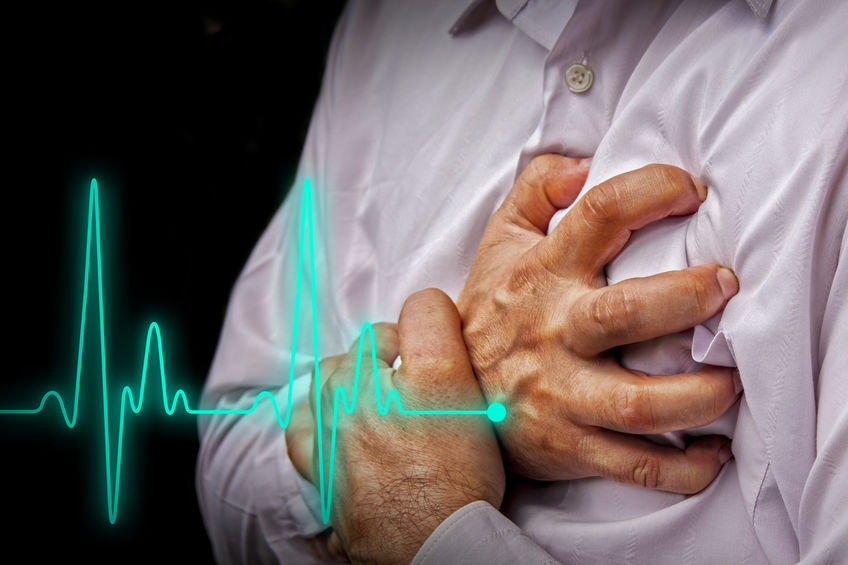
A Warning To Experts
15th June 2021
A Quick Guide To Tenosynovitis with deQuervains in the ED
29th June 2021Chest pain is a common symptom that presents to the Emergency Department and many of these patient have conditions that are not serious. However, some causes of chest pain are life-threatening and require urgent assessment and treatment.
Differentiating the patient that require urgent treatment and those that may need elective investigation or simply reassurance is something the Emergency Medicine doctor should cultivate. The perils of not clearly making a diagnosis that requires urgent treatment and discharging that patient may result in complications and subsequent legal action.
The many causes of chest pain
Chest pain is associated with a wide range of conditions, including:
• Ischaemic cardiac problems including acute coronary syndrome, coronary vasospasm, stable angina, aortic stenosis, and hypertrophic cardiomyopathy.
• Non-ischaemic cardiac disorders including pericarditis, mitral valve disease, and arrhythmias.
• Respiratory conditions including lung cancer, pleurisy, pneumothorax, and pulmonary embolism.
• Diseases of the breast.
• Skin problems such as herpes zoster infection.
• Musculoskeletal disorders including rib fractures, osteoporosis, radicular pain, costochondritis, and bone metastases.
• Gastrointestinal disorders including GERD, gastritis, cholecystitis, oesophageal spasm, and peptic ulcer disease.
• Psychological conditions such as panic disorder and anxiety.
• Other conditions including tabes dorsalis and diabetic mononeuritis.
Assessing the severity of the issue
With so many potential causes, it’s vital that at each assessment in the Emergency Department the clinician ascertains whether a patient’s chest pain requires immediate treatment.
Diagnosing which if the multiple causes of chest pain the patient is suffering from can be difficult, but a good medical history can often help you narrow down possible causes.
If a patient appears confused, sweaty, short of breath, distressed, or has recently vomited, there is a possibility they are suffering from acute coronary syndrome (ACS).
The Manchester Triage system acknowledges that initially it is more important to assume a serious cause of chest pain and therefore training most chest pain patients as Category 2 initially and after a primary assessment often including an ECG triaging them again to a lower category is an effective way expediting the care of those with significant cardiac pain.
Distinguishing between cardiac and non-cardiac chest pain
One of the first differentiators that the Emergency Medicine doctor has to determine is if the pain is cardiac in nature. This often comes from taking a clear history
Identifying cardiac chest pain
Patients with cardiac issues often complain that their pain is tight and heavy. Other symptoms to look out for include:
• Continuous chest pain that lasts longer than 15 minutes.
• Chest pain accompanied by sweating, nausea, vomiting, and breathlessness.
• Pain that occurs with no exertion.
Confusingly, some patients with cardiac-related pain find that antacids or nitrates relieve their pain and therefore assume that they are suffering from a gastrointestinal issue. However, this does not prove the diagnosis and physicians must do further examinations before ruling out cardiac problems.
Identifying non-cardiac chest pain
Non-cardiac chest pain is caused by a wide range of issues, including recent trauma, gastrointestinal issues, mental health issues, and even medications. Musculoskeletal pain is associated with tenderness and may get worse when the patient coughs. Gastrointestinal pain is very difficult to distinguish from cardiac chest pain and often requires extensive assessment to rule out life-threatening issues.
Examining chest pain
When examining patients presenting with chest pain, the nurses in the Emergency Department undertake a series observations such as pulse, blood pressure nabbed conscious level, while looking out for key signs of cardiac failure. They should also look for evidence of chest trauma and localised tenderness, as well as oedema or deep vein thrombosis.
If cardiac problems are ruled out, non-acute chest pain should be investigated with further tests such a blood tests, appropriate imaging including X-rays, CT scans and ultrasound may be required in the Emergency Department to make a diagnosis
A resting ECG particularly if the patient has become pain free, is normal in over 90% of patients with angina-like symptoms and this does not exclude a cardiac cause for the patient’s symptoms.




